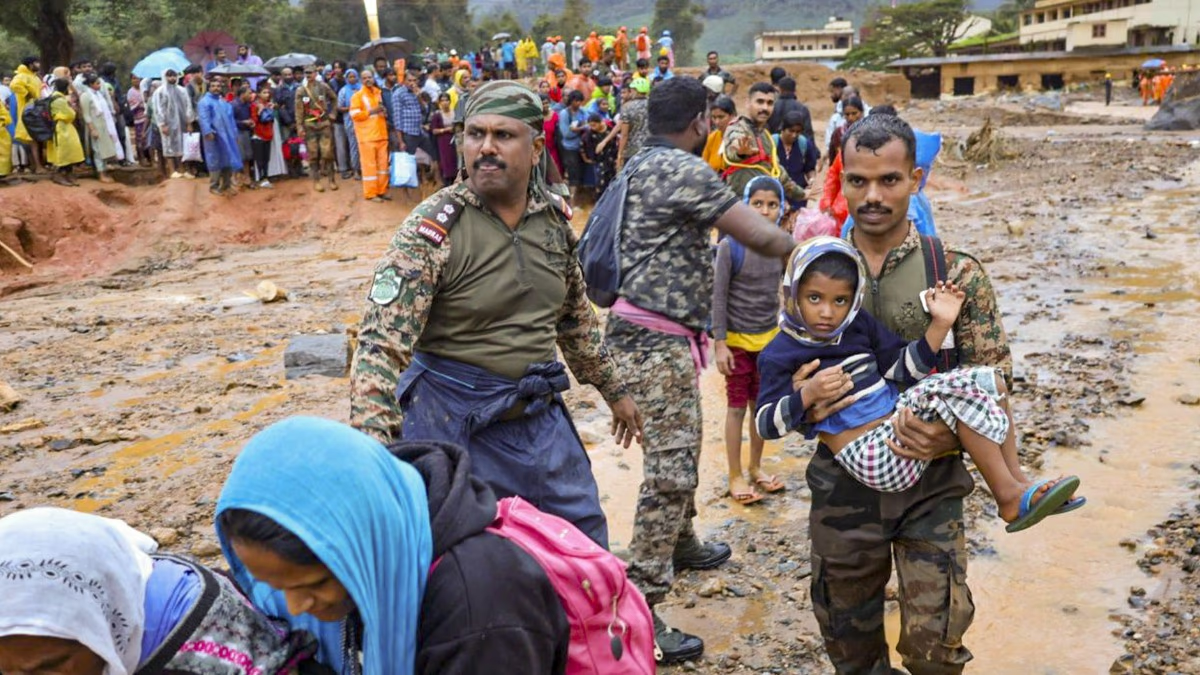In Wayanad, Kerala, early Tuesday morning, a landslide triggered a flood, causing widespread devastation in just four hours. Four villages with a combined population of about 22,000 were completely destroyed. Homes were buried, and hundreds of people were trapped beneath the rubble. As of now, 156 deaths have been confirmed, and 100 people are still missing. Rescue efforts are facing numerous challenges. This disaster has brought back memories of the Kedarnath tragedy that struck 11 years ago. People who went to bed at night were found buried in debris by morning. This catastrophe has marred the beauty of these villages.
The four villages that were obliterated in Wayanad are Mundakkai, Churalmala, Attamala, and Noolpuzha. The bridge between Mundakkai and Churalmala has collapsed, severing connections with the affected areas. Due to a red alert issued by the weather department, helicopters are unable to take off. Evacuations are being attempted by road only. The weather department has issued a red alert for heavy rains in Wayanad and nearby districts, leading to the closure of schools in 11 districts across Kerala.
The Torrent From The Hills Swept Away Villages
The sheer scale of nature's fury in Wayanad has left everyone in shock. This is considered the biggest disaster to have hit the area. Within four hours, three landslides occurred, and the ensuing torrent swept away four villages. Now, rescuers are digging through the debris, pulling out bodies covered in mud or trapped under rocks. Some bodies have been found floating in rivers. Throughout all this, rescue teams are risking their lives to save others. The likes of this devastation post heavy rain and landslides had never been seen before in Wayanad.
Also Read:
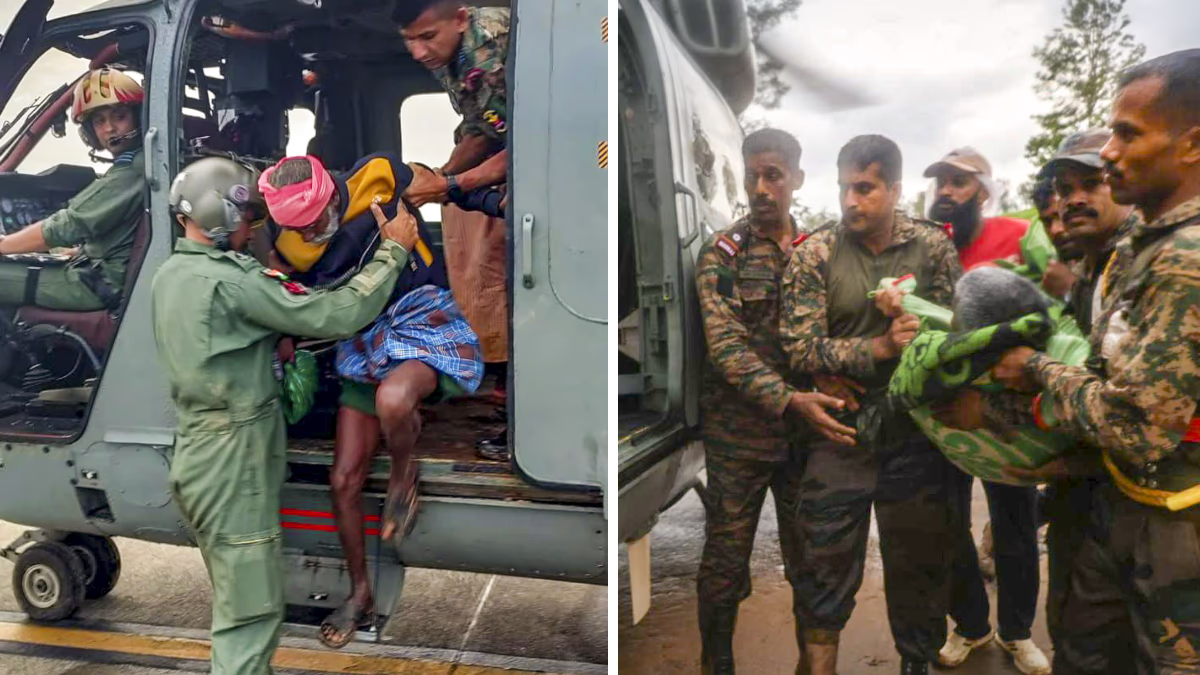
Source: aajtak
Why Similar to Kedarnath's Disaster?
On the night of June 16-17, 2013, the horrific scenario remains etched in everyone's memory. Uttarakhand's Chamoli, Rudraprayag, and Uttarkashi districts faced severe rain, leading to flash floods and landslides. The rivers Alaknanda, Bhagirathi, and Mandakini surged, leaving a path of destruction. Places like Govindghat, Bhinder, Kedarnath, Rambada, and Dharali in Uttarkashi disappeared from the map. Over 10,000 lives were lost, with thousands unaccounted for. With the help of the air force, more than 1.10 lakh people were rescued. The Kedarnath disaster was triggered by the breach of an icy wall of a natural lake on the Chorabari glacier, resulting in a flash flood that wrought havoc from Kedarnath to Haridwar (about 250 km away).
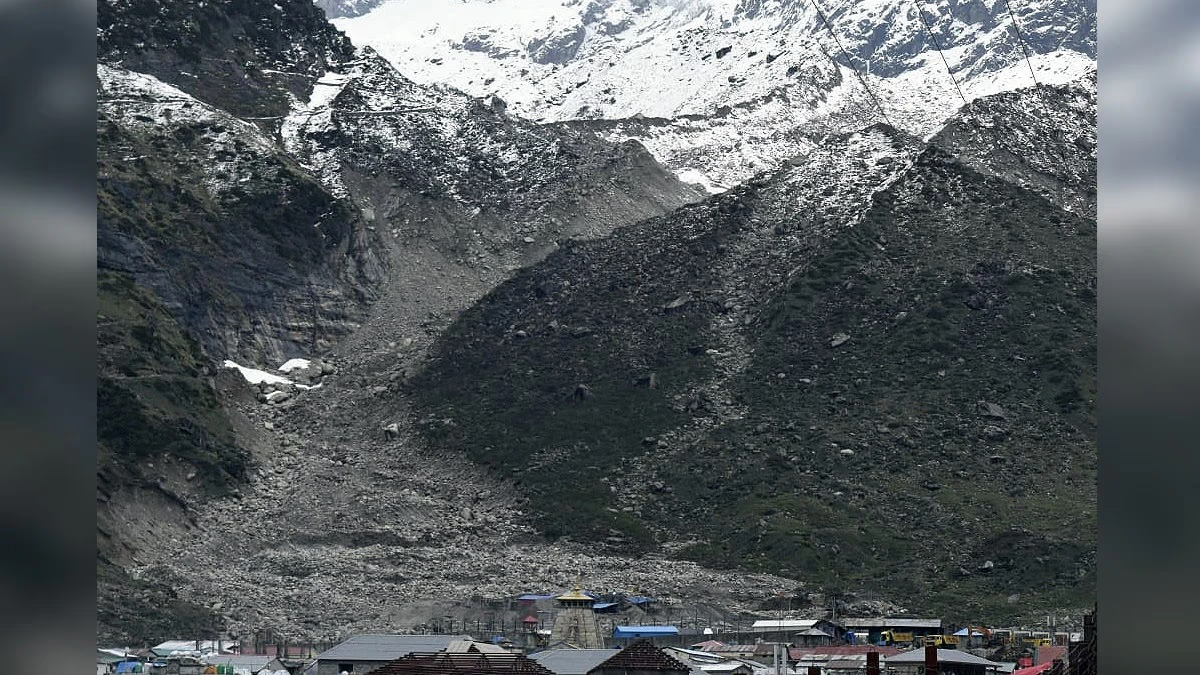
Source: aajtak
Kedarnath, situated at an altitude of 3,584 meters in the Garhwal area of Rudraprayag district, Uttarakhand, is considered one of the sacred Char Dhams of Hindus. It is the highest of the 12 Jyotirlingas mentioned in Hindu religious texts. The Mandakini River flows near the Kedarnath temple, which is believed to be around a thousand years old, built with large stone slabs on a rectangular base. Pilgrims visiting the Char Dhams first go to Yamunotri, then Gangotri, Badrinath, and finally Kedarnath.
Also Read:
What Exactly Happened in Wayanad?
Wayanad, known as a tourist spot, is situated 2,100 meters above sea level, adorned with lush greenery, fog-covered hills, and pure air, making it a heaven on Earth. But today, the scene is different. Rubble is spread all around, with roads caved in at multiple spots. The pictures tell the story of the disaster that struck Wayanad. During the night between Monday and Tuesday, intense rain turned into calamity. Three landslides occurred between 1 AM and 5 AM, devastating four beautiful villages - Churalmala, Attamala, Noolpuzha, and Mundakkai in the Chellyar river's catchment area below the mountains. The villages were engulfed in giant rocks and debris, turning homes into rubble within moments.
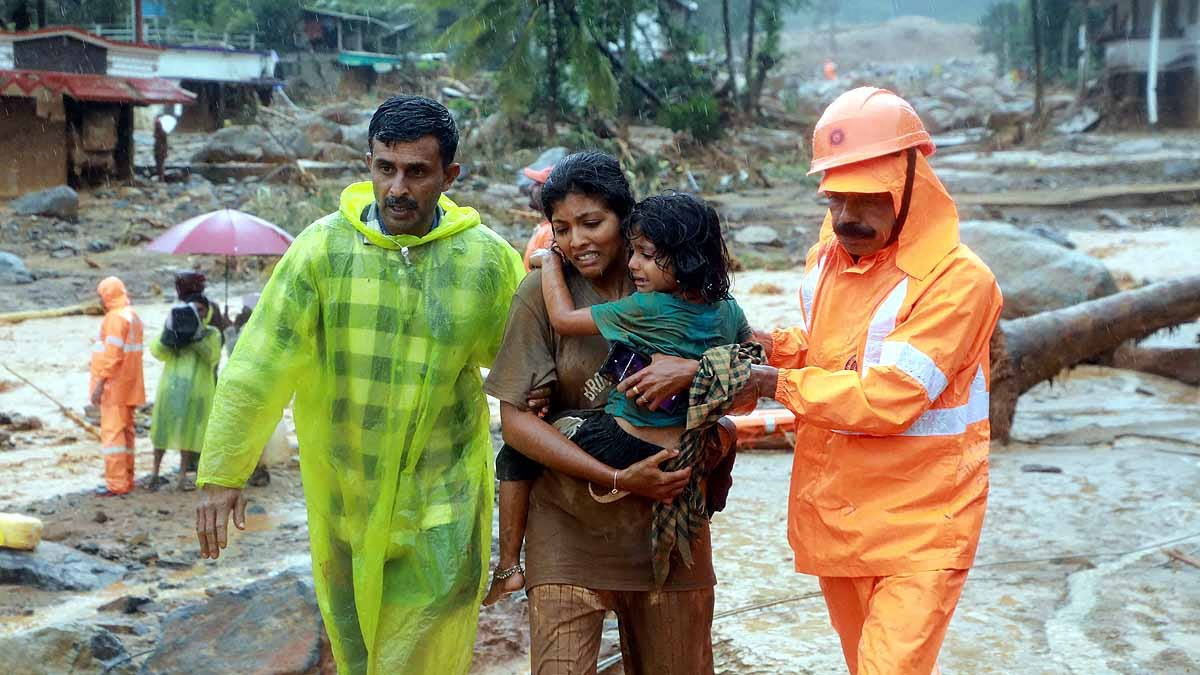
Source: aajtak
Bodies Found 50 km Away
Most residents of these four villages work in tea plantations, with around 22,000 people living here. At around 1 AM, when the first landslide hit, everyone was asleep in their homes, leaving them no chance to escape. Subsequent landslides occurred two more times. The debris has not only destroyed homes and structures but also buried people in their sleep, regardless of whether they were children, elders, or women. Locals describe the midnight havoc unleashed by nature. Heavy rain caused several mountains to collapse, sending water and debris rushing down in Mundakkai, recognized as a high-risk disaster zone. Soil and massive rocks quickly rolled down to Churalmala, causing flash floods that swept away four villages. The scale of the disaster is indicated by the fact that ten bodies were found some 50 km away from the landslide area. On Wednesday, two more bodies were recovered from the Chellyar River, and eight additional bodies were retrieved from Mundakkai.
Also Read:
Continuing downpours persisted until Tuesday morning. Subsequently, the army, navy, air force, NDRF, and Kerala Disaster Management Authority launched rescue operations, notwithstanding the hazardous weather, endangering their lives to salvage people from the calamity.
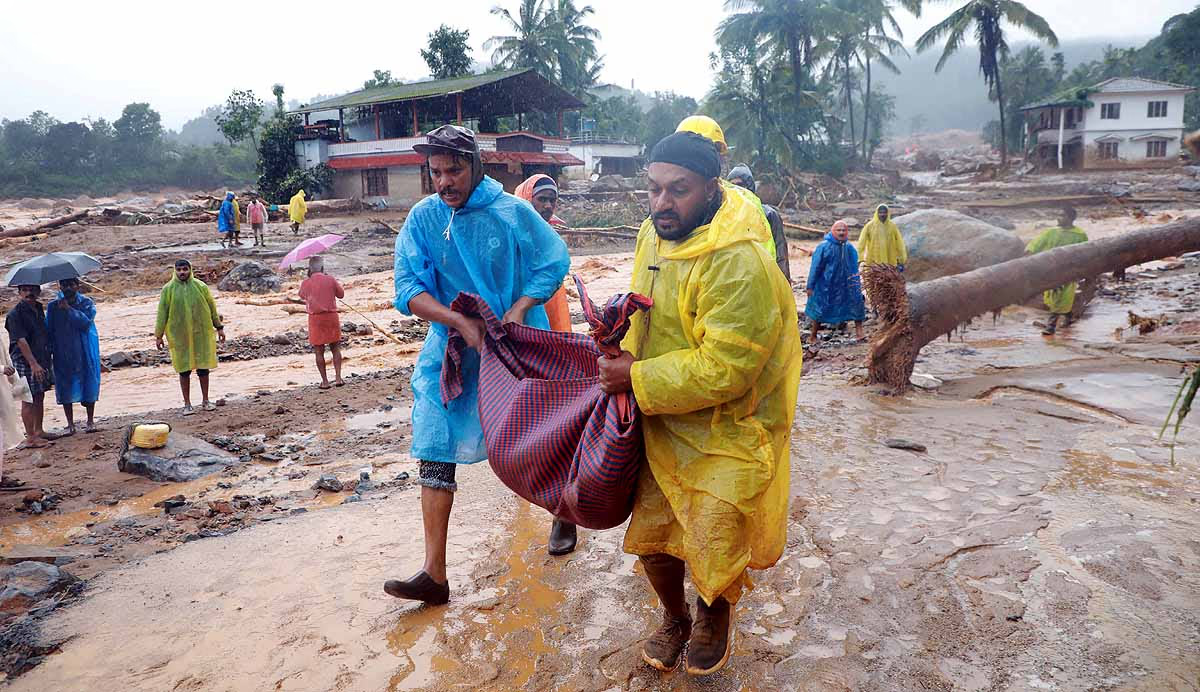
Source: aajtak
A Team of 800 People Engaged in Rescue
Local residents highlight the challenge, with the collapse of the bridge between Mundakkai and Churalmala rendering the rear area entirely isolated. Chunnarmala River, about 100 meters wide, is flooding dangerously. An NDRF team managed to cross the river to the other side. With the help of this team, approximately 800 people have been rescued so far. Officials reveal that the weather department's red alert for the next two days means that helicopters cannot take off. Consequently, reaching the people stranded in the water and under the debris can only be attempted by land. The rescue operation runs day and night, but heavy rain and strong water currents pose significant obstacles.
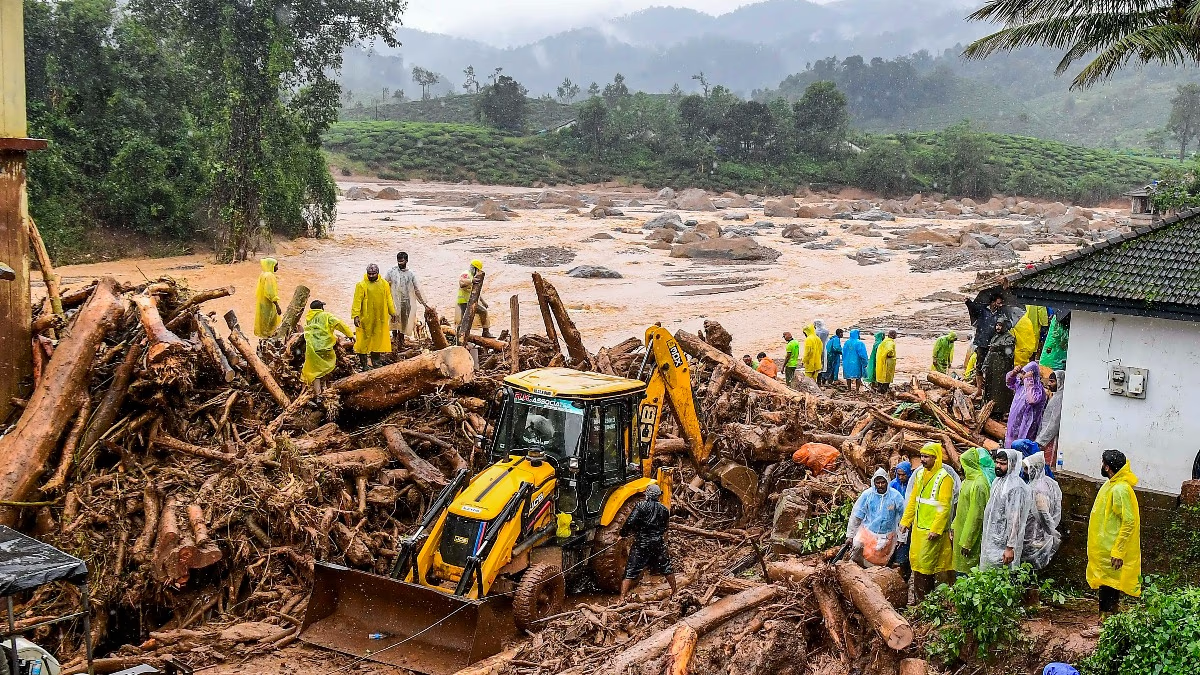
Source: aajtak
483 People Died in Kerala Floods Six Years Ago
Back in August 2018, a major natural disaster killed 483 people in Kerala. This disaster was termed the 'Flood of the Century' in the state. The catastrophe resulted not only in significant loss of life but also in the destruction of property and livelihoods. The central government declared the 2018 floods a 'Disaster of Serious Nature.' After the tragedy, over 14.50 lakh people from 3.91 lakh families were relocated to relief camps. Around 57,000 hectares of agricultural crops were ruined.
Images of the Indian Air Force airlifting pregnant women during the 2018 floods remain vivid in the minds of Keralites. The following year, in 2019, another disaster struck when a landslide in Wayanad’s Puthumala killed 17 people. In October 2021, continuous rains triggered another landslide, claiming 35 lives in Idukki and Kottayam districts. That year, heavy rains and flood-related incidents took 53 lives in Kerala.
Also Read:
In August 2022, landslides and sudden floods, triggered by heavy rains in Kerala, claimed 18 lives, damaged hundreds of properties, and displaced thousands to relief camps. According to the Ministry of Earth Science, of the 3,782 landslides that occurred across the country between 2015 and 2022, the highest number of 2,239 landslides were recorded in Kerala.
